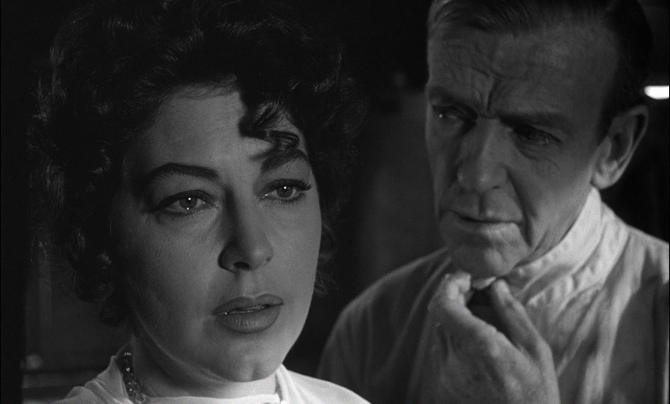There was something uniquely different about the Cold War. . .the intangible nature of a symbolic wall separating West from East, having no troops on the ground, no bombs being dropped, simply an ever-growing nuclear arms race – unnerving in how one twitchy finger could change the world in an instant. A fear no less frightening, for the unknown is often far worse. A cautionary ‘what if’ tale, Stanley Kramer’s On the Beach (1959) finds the world having been mostly destroyed by a nuclear war, with only Australia having thus far evaded the ravaging power of radiation in the air.
With the rest of the world silent, those remaining attempt to live their lives Down Under. But is doom impending? Estimates claim that extinction levels of radiation will reach the island in less than six months. Fascinating in its depiction, some do their duty (a butler-like waiter at the poshest of conservative private clubs continuing with his job; the assistant to one of the top military men constantly remaining by his side), while others cling to hope. . . some simply drink (a funny scene finds two elitists lamenting that the club overstocked on Port – and that it will go to waste).
Woven amongst these stories is the tale of American submarine Capt. Dwight Towers (Gregory Peck), who, commanding the sole remaining nuclear powered sub, is tasked with leading an expedition to investigate whether snow and rain has dropped radiation levels in the North. . . while a garbled form of Morse Code somewhere around San Diego has given the military/scientists hope that someone may have survived (the second portion of their task).
Along with his crew, including Lieutenant Commander Peter Holmes (Anthony Perkins), and scientist Julian Osborn (Fred Astaire), they explore the far North and the mystery that is the San Diego signal. Will any hope come of this last ditch investigation?
Enthralling in its realistic depiction of human beings, each character handles the dark situation in a contrasting manner (as many are pondering, do you commit suicide?). Towers and Holmes do their duty, even while the former discusses his wife and two children in present tense, and the latter struggles with his wife Mary (Donna Anderson) – whose hope-driven mind set is slowly cracking under the strain of the constant doom and gloom. Nurtured by Kramer’s skilful hand, he creates a rhythm between ordinary (love and heartbreak are two examples of how things do not change), and the post-apocalyptic extraordinary. Intriguingly, it is hard to differentiate which is worse, is it what follows after a lovely day at the beach – a moment where Towers calls his new love interest, Moira Davidson (Ava Gardner), by his wife’s name (the falling-in-love woman realizing that he has been confusing them the whole time), or gazing out the periscope at the ghost town that is San Francisco – no longer a city without its people? Wholly contrasting, then there is Osborn, who decides to purchase a Ferrari to enter the final Australian Grand Prix – why, many may ask – because it has long been a dream of his. And, when he does win (to a near empty crowd), he proudly screws the winning badge to the back of the car – interesting, when the world could be ending. . . yet, life, until the utter ending, keeps on going. It is also worth noting that the above mentioned club waiter, as the supposed final days are nigh, plays at the billiard table when no one is around (a small, satisfying thing that he would never have attempted otherwise).
A significant, far-reaching film that is still a stark warning of the dangers of nuclear weapons, On the Beach is a poignant, striking, and often subtle watch. It features so very much to look for – stellar performances from its ensemble cast, creative direction from Kramer, dynamic black and white cinematography from Giuseppe Rotunno – as if the lighting itself was telling the external story of each individuals’ internal struggle with their deadly future, its use of a real submarine for shooting (a non-nuclear Royal Navy sub was used as the U.S. Department of Defense would not cooperate), and striking shooting locations – empty power stations, a population free San Francisco, supposedly guards at each end of the Golden Gate Bridge were paid $500.00 to stop traffic so they could get shots of it empty. “There is still time” to see this moving motion picture, but, you never know, so don’t wait too long.


